I'm Fatting And Thinning The Golf Ball. Why Is This Happening - And How Can I Fix It?
Fat, thin, fat, thin. Repeat. It's infuriating. Fear not, because our man Clive Tucker is going to help you to strike the ball cleanly. Every time.
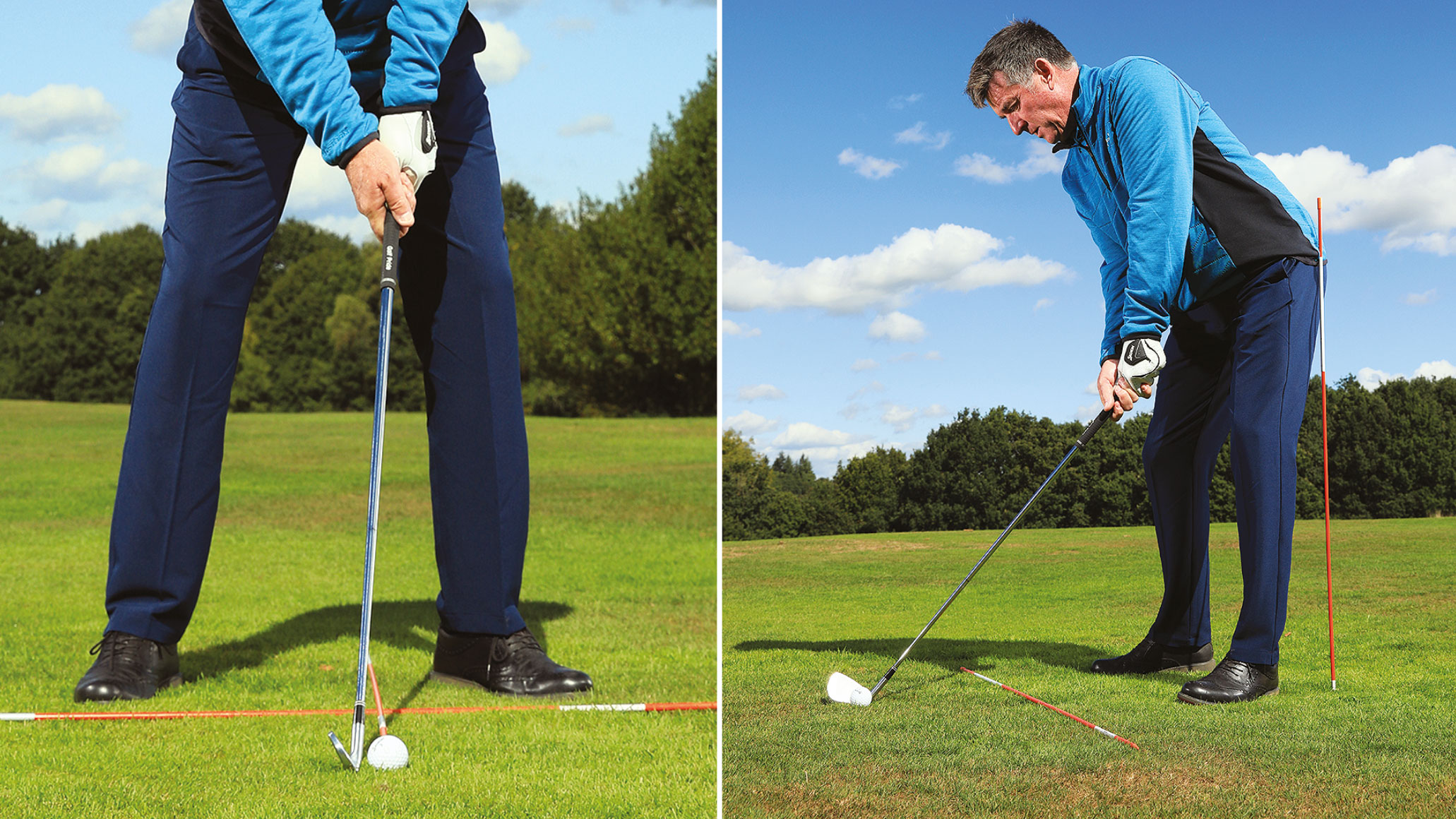
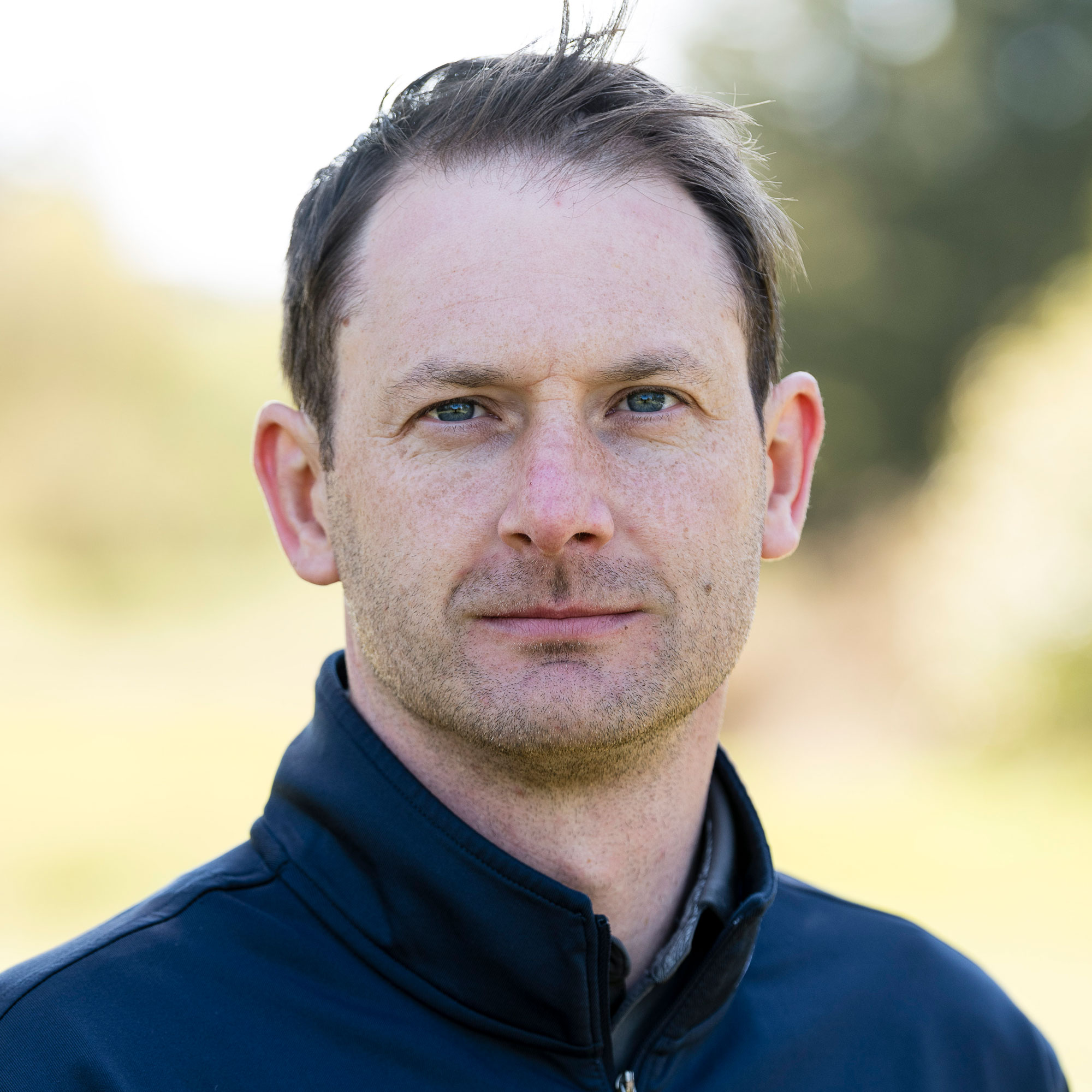
Clive Tucker
There are times when no matter what we seem to do, we have a poor ball-striking round. For a lot of mid to high handicappers, bad ball-striking comes in the form of 'fats' and 'thins'. In other words, the ball doesn't come off the center of the clubface (in some cases nowhere near it)!
Knowing how to hit an iron shot means having to focus in on those key fundamentals. such as the correct ball position and finding the perfect set-up. Here, Golf Monthly Top 50 Coach Clive Tucker demonstrates the causes behind these poor card-wrecking strikes, and offers some helpful advice on how to cure them and improve your ball-striking.
Fat And Thin Strikes Explained
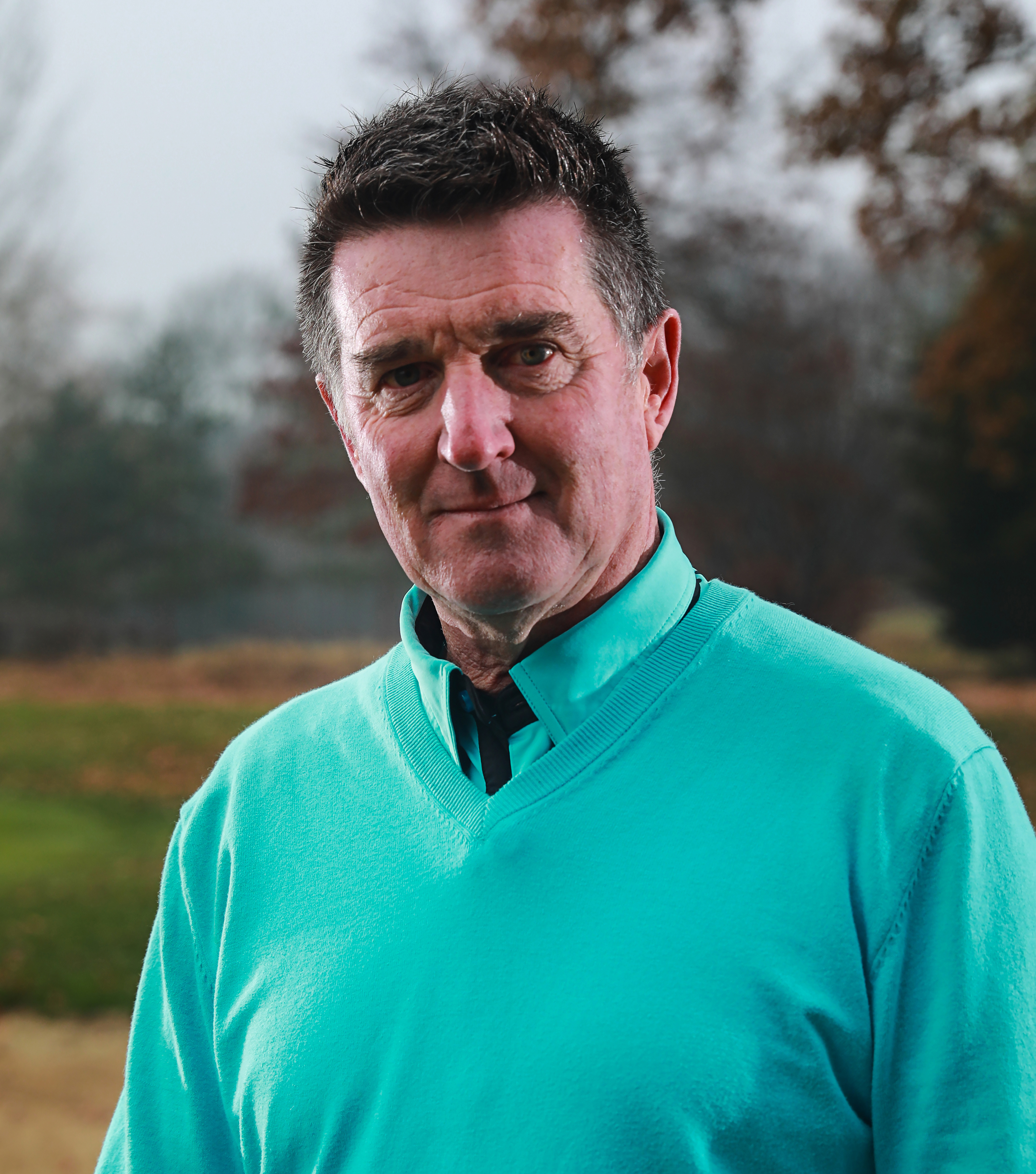
Clive spent ten years as a playing professional before making the move into elite coaching. He's worked with a number of Tour professionals, and one of his great strengths is being able to tailor his instruction for each student no matter what their level.
Thin Shot Causes And Fixes
1. Poor ball position
Having the ball too far up towards the left instep is a common cause of thin shots. The problem is you simply can’t move your body far enough forward in the downswing to get the club interacting with the ground below the ball.
It can vary, but for me, a good ball position with an iron is a couple of balls inside the left heel. If the ball is on the left heel with a driver, it definitely wants to be one back with an iron. I’m not a fan of moving the ball back with the shorter irons – for me, it can stay in a similar position with every iron.
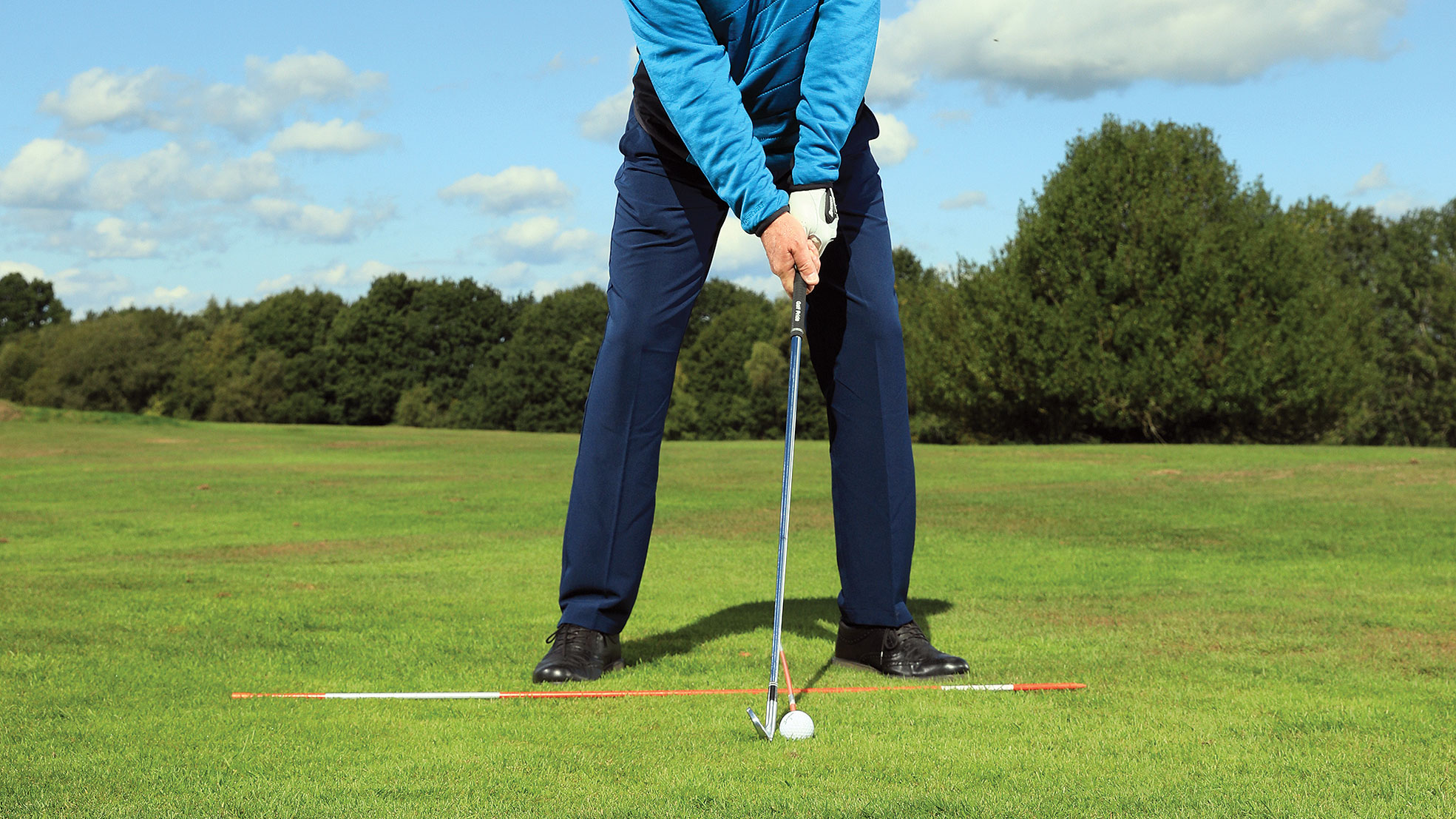
To avoid striking the ball fat or thin, I like to have the ball positioned a couple of balls inside the lead heel (as above)
2. Standing up on downswing
Standing up on the downswing is another very common cause of fat shots. As the pelvis moves towards the ball halfway down you gain height, meaning the radius of the swing is no longer great enough to hit the ball cleanly.
Get the Golf Monthly Newsletter
Subscribe to the Golf Monthly newsletter to stay up to date with all the latest tour news, equipment news, reviews, head-to-heads and buyer’s guides from our team of experienced experts.
This drill will help, although an umbrella is better than an alignment stick as you will feel it more easily. Stick the umbrella in the ground about three inches from your left buttock at address. Then work on moving the buttock on to the umbrella in your downswing.
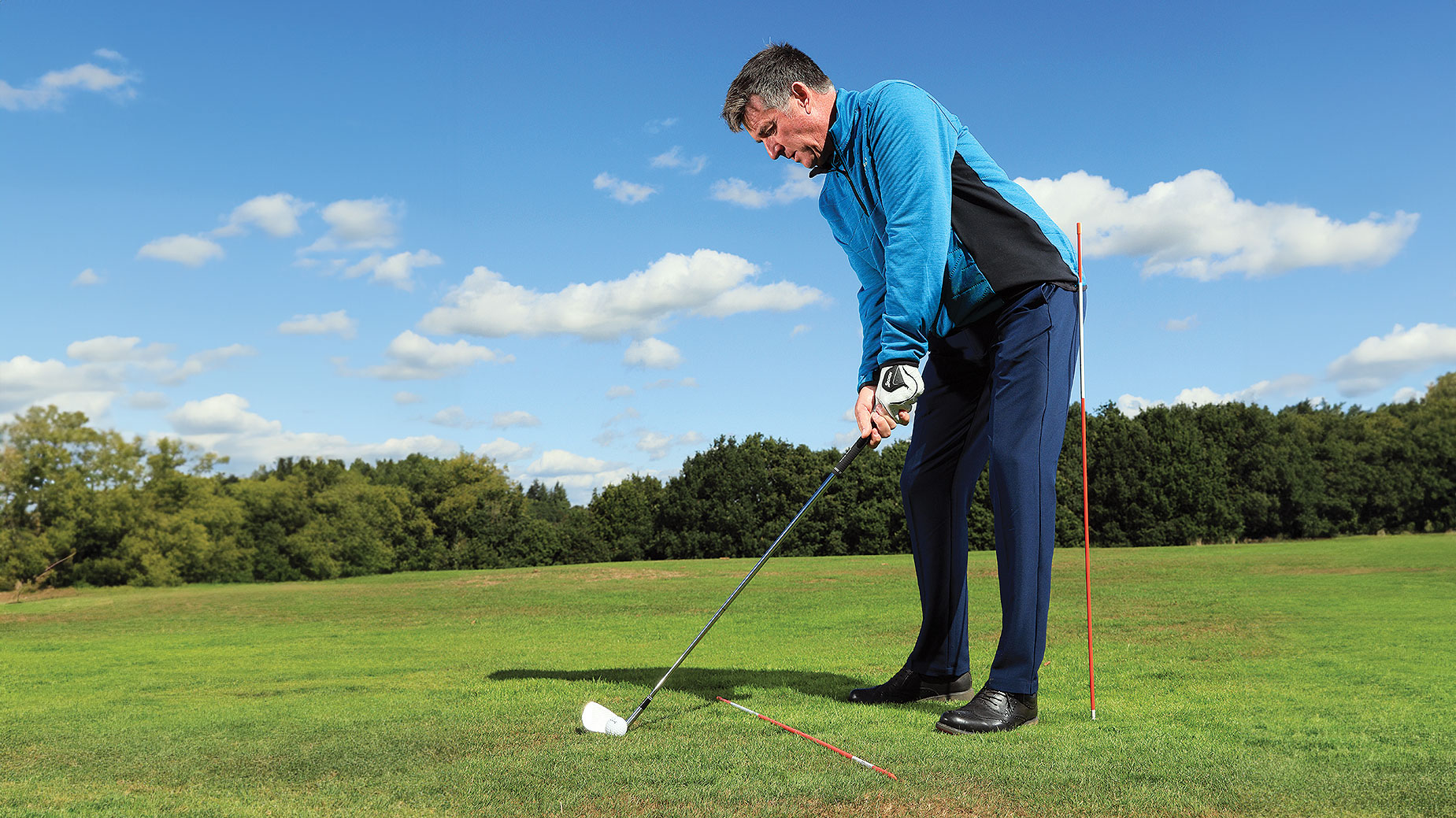
I recommend using an umbrella for this drill - it's going to help you to stop thinning the golf ball
Fat Shot Causes And Fixes
1. Moving off the ball
Moving off the ball or swaying on the way back is a common cause of heavy strikes, as many people never move back across on the downswing and so strike the ground behind the ball. The best remedy is simply not to move off the ball in the first place! Checking out your shadow is an excellent way of showing you what’s going on.
Place one ball on your shadow’s head and another on its pelvis. The ball should remain in your head’s shadow as you swing, while the one in the pelvis should move a few inches across in the downswing. If the ball comes out of your head’s shadow, you’ll know that you’re moving off the ball.
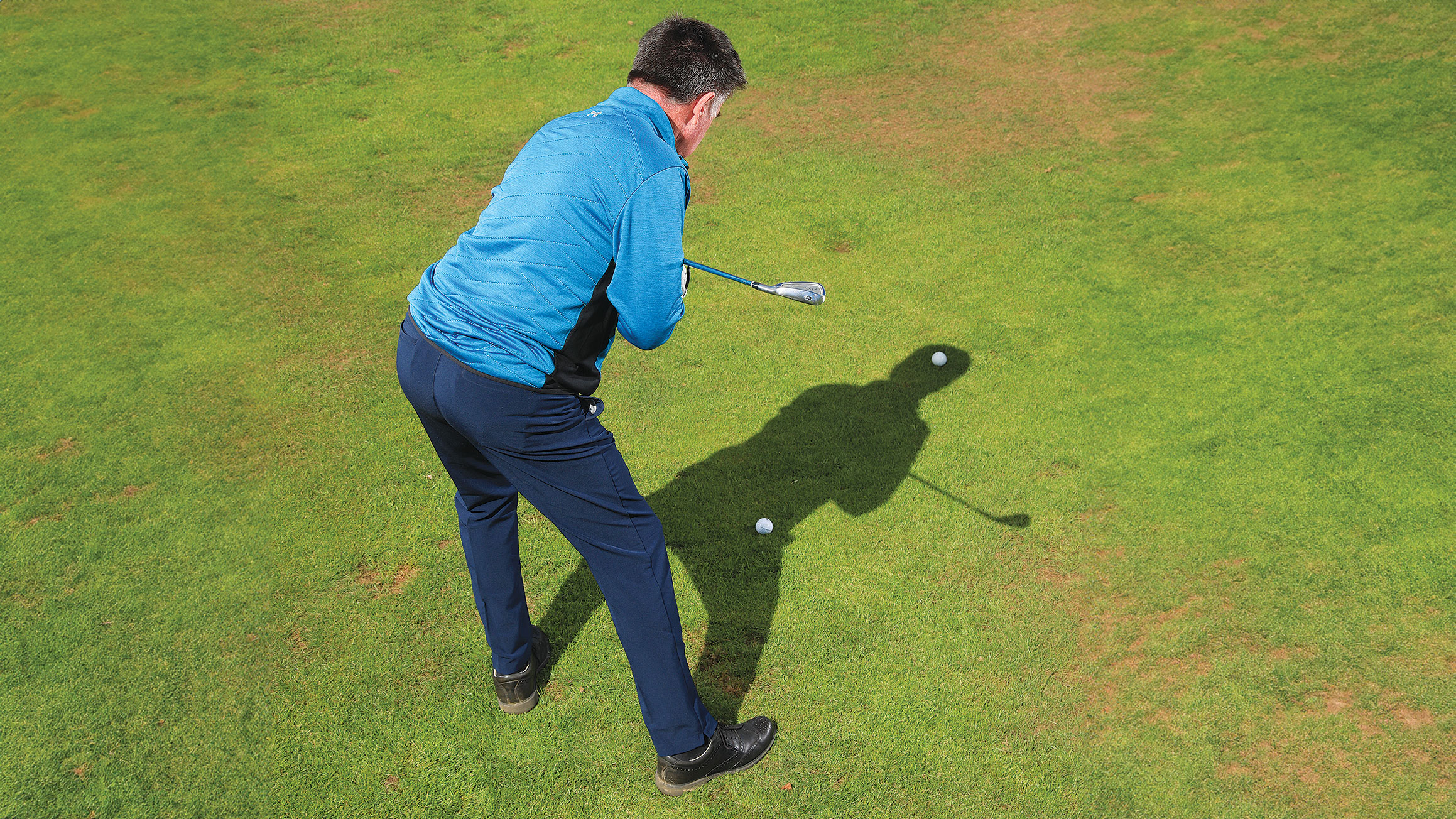
One ball should remain in your head’s shadow as you swing, while the one in the pelvis should move a few inches across in the downswing
2. Casting the club
Casting the club on the downswing will often lead to heavy contact too. You might have a nice backswing, but your body then becomes a bit passive or stalls coming down. The arms and the elbow will then straighten too quickly, with your arc bottoming out behind the ball, rather than under or beyond it.
The remedy is to keep your chest over the ball, but more open. The right elbow will then go into extension – or straighten – much later, so you strike the ground ahead of the ball, not behind it. Your hips and shoulders should ideally be 30-40 degrees open at impact.
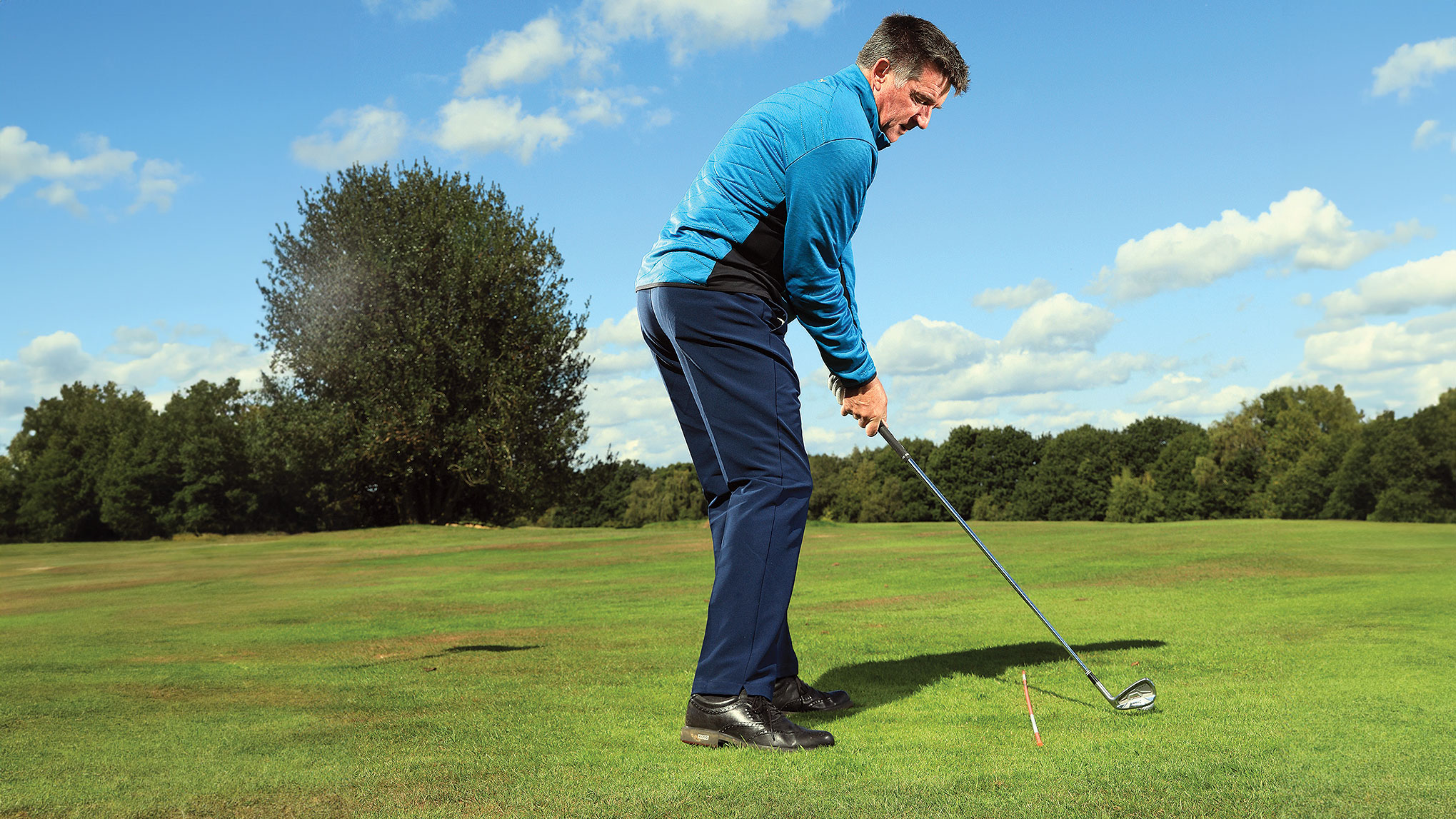
This is the type of impact position I'm looking for
FAQs
Q: Why Am I Hitting My 3-wood Fat And Thin?
A: A lot of comes down to set-up. Position the ball in the middle of your feet, move your lead foot towards target approximately 3-4 inches, and then move your trail foot back to take your stance. Contact with the turf is necessary to execute the shot. However, it’s important not to try and get underneath the ball, as this often causes us to lean back and will result in topped and thin thinned shots.

Michael has been with Golf Monthly since 2008. A multimedia journalist, he has also worked for The Football Association, where he created content to support the England football team, The FA Cup, London 2012, and FA Women's Super League. As content editor at Foremost Golf, Michael worked closely with golf's biggest equipment manufacturers and has developed an in-depth knowledge of this side of the industry. He's a regular contributor, covering instruction, equipment, travel and feature content. Michael has interviewed many of the game's biggest stars, including seven World No.1s, and has attended and reported on numerous Major Championships and Ryder Cups around the world. He's a member of Formby Golf Club in Merseyside, UK.
- Clive TuckerTop 50 Coach
-
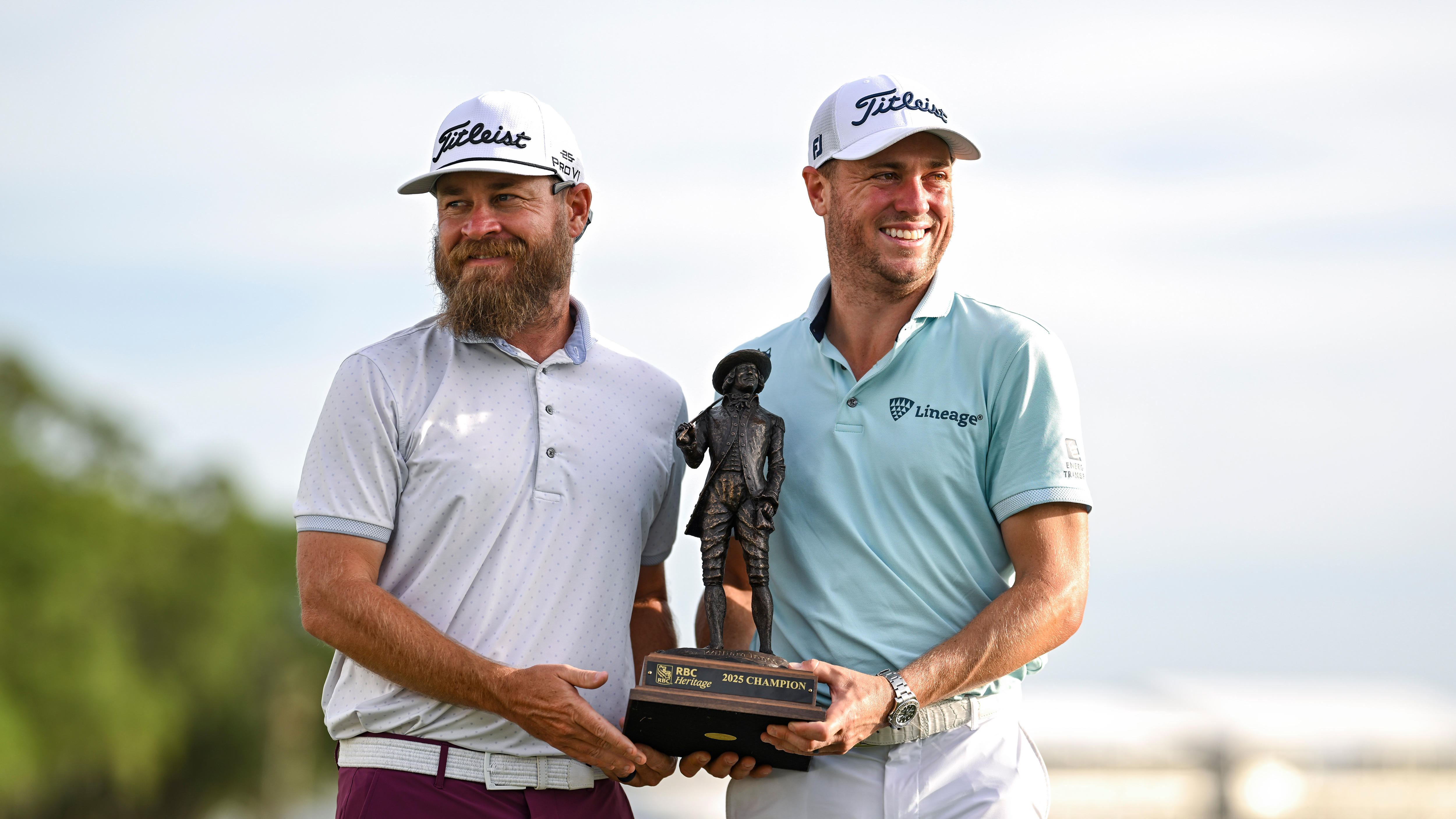 Justin Thomas Confirms Stand-In Caddie Will Not Replace Long-Term Looper After First Victory Since 2022
Justin Thomas Confirms Stand-In Caddie Will Not Replace Long-Term Looper After First Victory Since 2022Thomas won the RBC Heritage with Max Homa's former looper, Joe Greiner as his assistant but is looking forward to welcoming his regular caddie back soon
By Jonny Leighfield
-
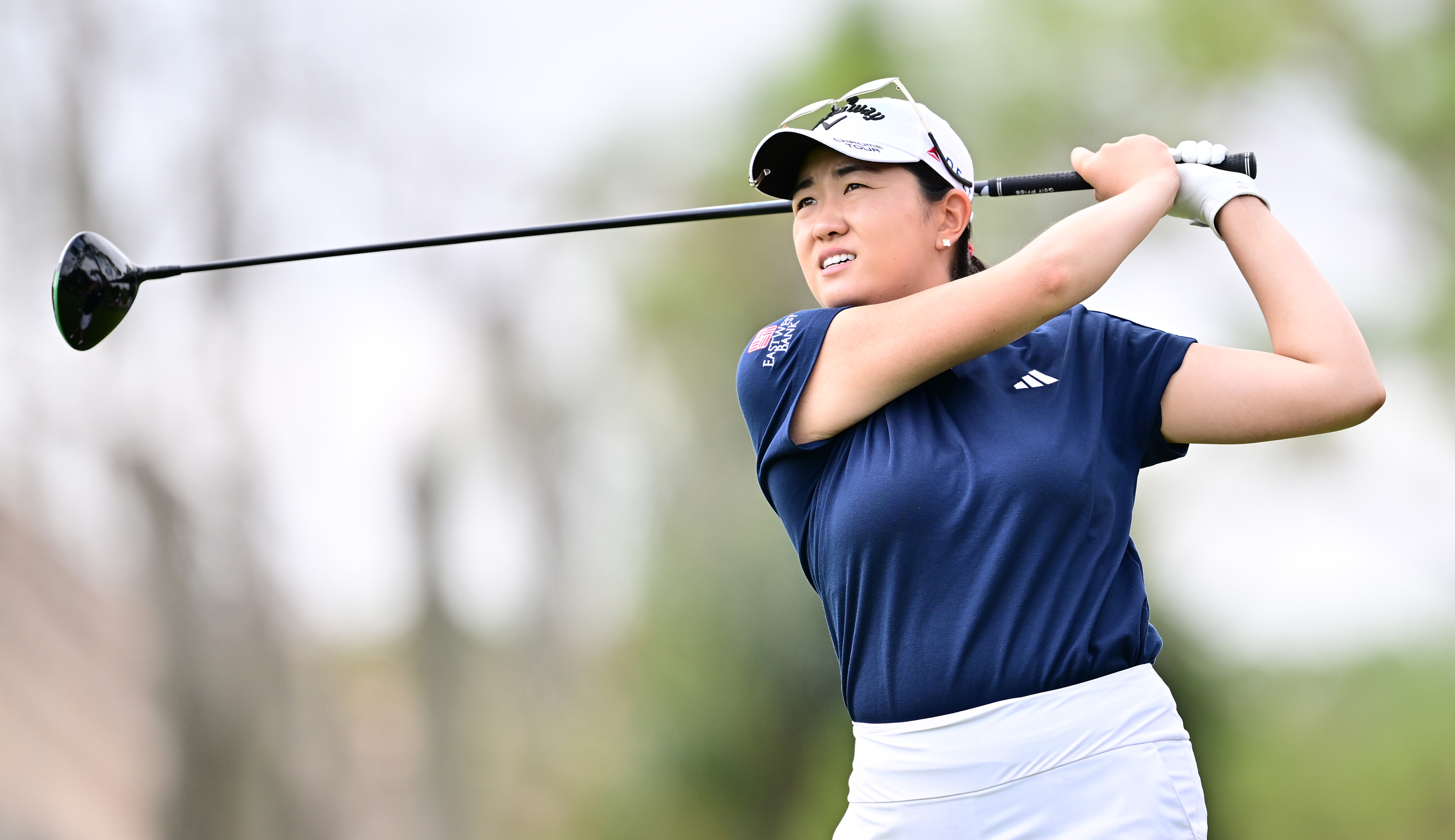 Rose Zhang Ruled Out Of Chevron Championship
Rose Zhang Ruled Out Of Chevron ChampionshipThe American hasn't featured in a competitive event since withdrawing from the T-Mobile Match Play, with it reported that Zhang will miss the Chevron Championship due to an ongoing neck injury
By Matt Cradock